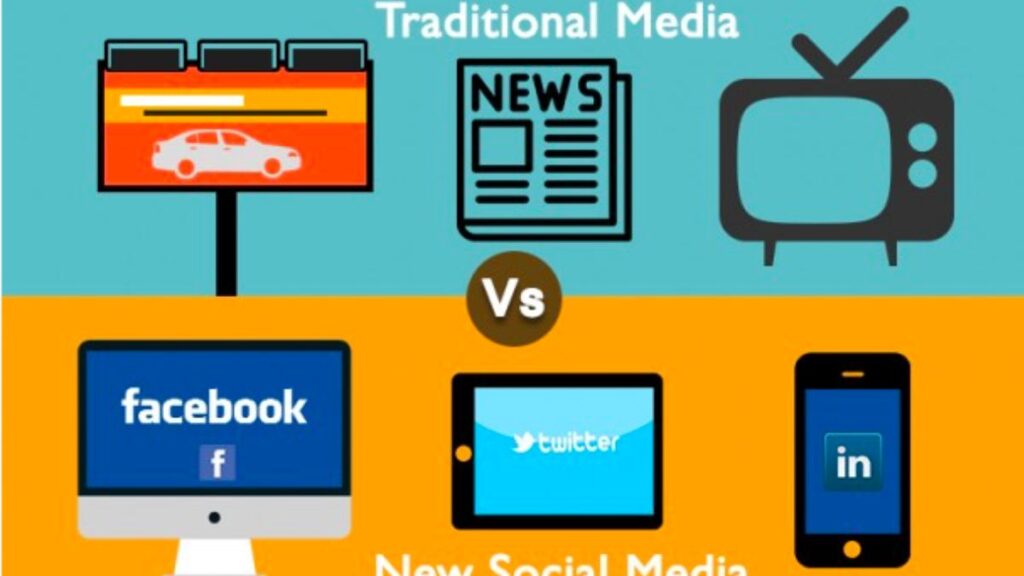In the 21st century, the relationship between social media and traditional media has undergone a profound transformation. As digital technologies advance and the internet becomes increasingly ingrained in our daily lives, the way we consume information has shifted dramatically. Traditional media, such as newspapers, television, and radio, has coexisted with and, in many ways, been complemented by the rise of social media platforms like Facebook, Twitter, Instagram, and TikTok. These two forms of media, while distinct in their nature, are not mutually exclusive. Instead, they often intersect, creating a hybrid model of communication that is reshaping how individuals, brands, and governments interact with the public. This article explores the intersection of social media and traditional media, delving into their evolving relationship and the ways in which they influence and inform each other.
Understanding Social Media and Traditional Media
Before exploring how these two forms of media intersect, it’s important to understand their individual characteristics. Traditional media refers to conventional communication channels that have been used for centuries to inform the public. These include print media (newspapers and magazines), broadcast media (television and radio), and outdoor media (billboards and posters). Traditional media is typically a one-way communication process, where content is created by professionals and broadcast to a passive audience.
On the other hand, social media refers to digital platforms that allow individuals to create, share, and interact with content in real time. Social media platforms like Facebook, Twitter, Instagram, YouTube, and LinkedIn enable users to engage directly with each other, sharing opinions, news, and experiences. The hallmark of social media is its interactivity, as it empowers users to not only consume content but also to create and distribute it.
While traditional media was historically controlled by a few large organizations, social media democratizes the production and dissemination of content. This fundamental difference in structure and communication style is a key point of distinction between the two.
The Convergence of Social Media and Traditional Media
While they have their differences, social media and traditional media have increasingly intersected in recent years. These two forms of media have started to complement each other in a way that reflects changing consumption habits and technological advancements. This convergence is evident in several key areas:
1. Content Sharing and Distribution
Social media platforms have become a primary distribution channel for traditional media outlets. News organizations, for example, have embraced platforms like Twitter and Facebook to share breaking news, articles, and videos. By doing so, they are able to reach a much larger and more diverse audience than they could through traditional broadcast or print alone.
Many newspapers, television networks, and radio stations now have dedicated social media teams that post content in real time. This allows traditional media outlets to engage directly with their audiences and offer real-time updates, which is a feature that traditional media could not offer before the rise of social media. Social media has, in a sense, become an extension of traditional media, providing a space where news can be instantly distributed to a global audience.
2. The Rise of User-Generated Content
Another key area of convergence is the growing influence of user-generated content. Social media platforms are primarily driven by content created by everyday individuals. This is in stark contrast to traditional media, where content was largely produced by professionals and industry experts. However, the proliferation of user-generated content on platforms like YouTube, Instagram, and TikTok has changed the media landscape.
News organizations and traditional broadcasters are increasingly incorporating user-generated content into their programming. For example, viral social media posts or citizen journalism may be featured in TV broadcasts or printed in newspapers. In some cases, traditional media outlets even rely on social media to source news stories. This intersection of user-generated content with traditional media reporting reflects a broader shift towards more participatory forms of communication, where the audience is not just consuming content, but actively contributing to the media ecosystem.
3. Social Media as a Tool for Audience Engagement
Social media has transformed how audiences engage with traditional media. Television and radio stations, for instance, have used social media platforms as tools for audience interaction. Viewers can tweet questions to a host, comment on a news broadcast, or engage in live discussions during a television program. This interactivity fosters a sense of community and personal connection that traditional media outlets could not previously achieve.
Social media also allows traditional media to receive instant feedback from their audiences. Television shows and news organizations can gauge public opinion in real time, adjust their content accordingly, and even shape editorial decisions based on audience engagement. Additionally, social media provides traditional media outlets with valuable data on their viewers’ preferences, behavior, and demographics, helping them refine their content strategy.
4. The Blurring of Boundaries Between News and Entertainment
One significant trend that has emerged from the intersection of social media and traditional media is the blurring of boundaries between news and entertainment. In the past, traditional media outlets generally kept these categories separate. News was delivered in a formal and structured manner, while entertainment content followed its own set of rules and expectations.
However, social media has challenged this distinction. Platforms like Instagram, Twitter, and TikTok allow celebrities, influencers, and journalists to mix personal updates, entertainment, and news. News stories are often shared alongside entertainment content, and many social media influencers have become key figures in the dissemination of information.
The hybridization of news and entertainment on social media has influenced traditional media as well. Television networks and newspapers have adopted more informal and engaging styles of storytelling to appeal to younger audiences, who are accustomed to the fast-paced, interactive nature of social media. This shift has led to a more fluid approach to content, where the lines between news, entertainment, and personal expression are often hard to distinguish.
The Challenges of the Intersection Between Social Media and Traditional Media
While the intersection of social media and traditional media has led to many positive changes, it has also created challenges for both industries. One of the most pressing concerns is the spread of misinformation and fake news. On social media, content can be shared and spread quickly, often without verification. This has led to the proliferation of misleading information, which can have serious consequences for public opinion and trust in the media.
Traditional media outlets, which are typically more heavily regulated and adhere to journalistic standards, are often tasked with correcting or counteracting the spread of misinformation. However, in some cases, misinformation can spread on social media faster than traditional media can respond, making it difficult to contain the damage. This challenge underscores the need for both social media platforms and traditional media outlets to collaborate on strategies for combating fake news and improving media literacy among the public.
Another challenge is the shift in advertising revenue. Traditionally, television, radio, and print media generated substantial revenue through advertising. However, the rise of social media has disrupted this model. Advertisers now spend a significant portion of their budgets on digital platforms, where they can target specific demographics with greater precision. This shift in advertising dollars has put financial pressure on traditional media organizations, which must adapt to new revenue models to remain viable.
Conclusion: A Hybrid Media Future
In conclusion, the intersection of social media and traditional media has created a hybrid media landscape that continues to evolve. While each form of media retains its unique characteristics, their relationship is increasingly interdependent. Social media platforms serve as powerful tools for content distribution, audience engagement, and real-time interaction, while traditional media provides credibility, professionalism, and in-depth reporting. Together, they have reshaped how we consume information, making the media landscape more dynamic, accessible, and interactive than ever before.
The ongoing convergence of social media and traditional media also presents both opportunities and challenges. As these two forms of media continue to intersect, it will be important for both to find ways to work together effectively while addressing issues such as misinformation, audience fragmentation, and financial sustainability. The future of media is likely to be one where the boundaries between social media and traditional media are increasingly blurred, creating new opportunities for content creators, consumers, and businesses alike.
As we move forward, the intersection of social media and traditional media will continue to shape the way we experience the world around us, making it essential for us to understand how these two forces influence one another and, ultimately, our perceptions of reality.



